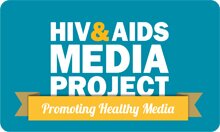Vulnerable Children
The term "Orphans and Vulnerable Children (OVC)" is used to describe all children who are judged to be vulnerable and at risk, including children affected by poverty, conflict and HIV. The term has replaced terms such as "AIDS orphan", which can be misleading as it implies that children orphaned by AIDS are themselves HIV-positive.
Traditionally the term "orphan" describes a child whose mother or both parents had died, but used in this way it tends to underestimate the total number of orphans or the impact of paternal death, especially within the context of the HIV epidemic. Thus, a more useful definition of an orphan is: a child under the age of 18 (some organisations use 15 instead) that has lost either one or both parents. Specifically, orphans can be:
- Maternal orphans (mother has died)
- Paternal orphans (father has died)
- Double orphans (both parents have died)
According to the
Until There's A Cure Foundation, the United Nations (UN) estimates that, currently, there are 14 million AIDS orphans and that by 2010 there will be 25 million. 11.6 million of these orphans live in Sub-Saharan Africa. In addition, millions of children live in households with sick and dying family members. Although not yet orphaned, these children are also severely affected by HIV and AIDS. The scale of the OVC problem is masked by the time lag between HIV infection and death. Even if all HIV infections were to stop today, it's likely that the number of orphans would continue to rise for at least the next 10 years.
Also see:Reporting on Children in the Context of HIV and AIDS and
AIDS Orphans published on
Avert






